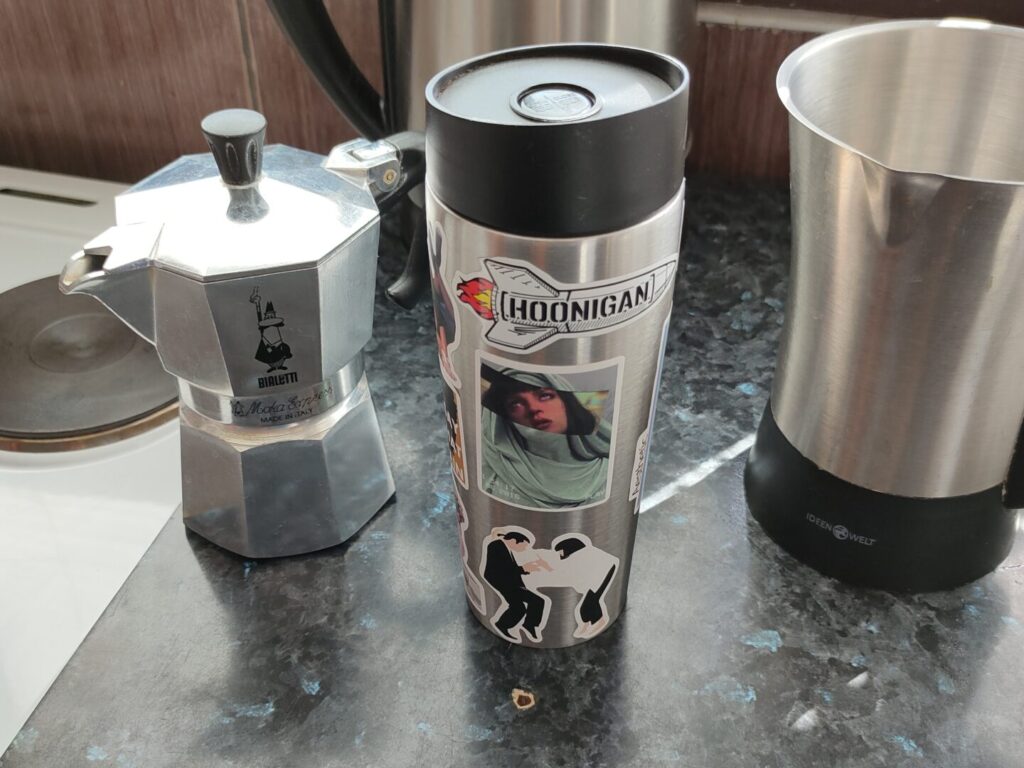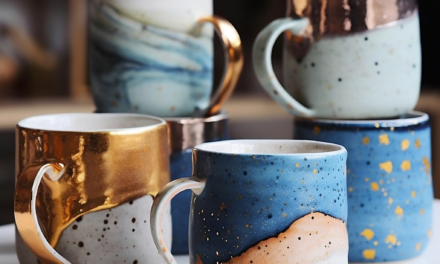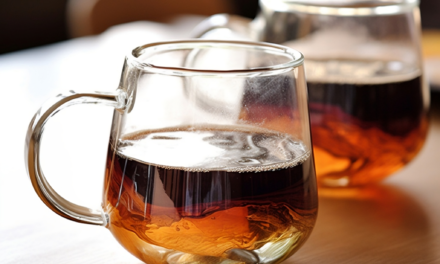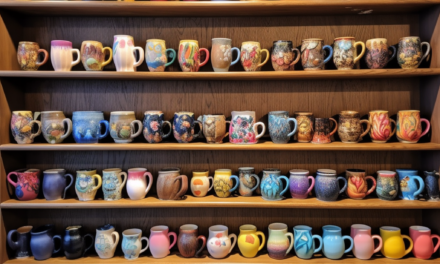As an Amazon Associate, we earn from qualifying purchases. We may also earn commissions if you purchase products from other retailers after clicking on a link from our site.
Stanley Quencher H2.0 FlowState Stainless Steel Tumbler
The Stanley Quencher H2.0 FlowState Stainless Steel Tumbler, your ideal companion for staying refreshed throughout the day with fewer refills. This Stanley Cup is a pink model with a handle and straw in the 40 oz (1182 ml) size, but many other options are available.
Pink Stanley Cups are everywhere these days. From social media to the local coffee shop, these trendy tumblers have taken the world by storm.
But for those new to the scene, a few questions might be swirling: Can I actually drink coffee out of one? Is it safe, given the recent lead controversy?
Does it — you know — change the taste of coffee?
Buckle up because we’re about to dive into the world of Stanley Cups.
Is It Safe to Drink Coffee From a Stanley Cup?
Stanley Cups are made from food-grade stainless steel, and steel is perfectly safe for holding your favorite hot beverage. They’re also BPA-free. However, the issue is that Stanley Cups use leaded solder to seal the cups, which presents a potential health safety hazard.
However, the answer isn’t exactly clear-cut.
Pacific Market International, the manufacturer of Stanley Cups, is facing an ongoing lawsuit concerning the alleged presence of lead in its products. The primary contention is that the company did not publicly disclose the use of lead in its manufacturing process until January 2024, prompting a potential class-action case filed by a Seattle-based firm.
Here’s what we know so far.
Stanley responded to these claims by acknowledging the use of lead but clarified that any risk is contingent on the cup becoming damaged and exposing the lead-containing pellet. The bottom of each cup features a stainless steel barrier covering this pellet, making access “rare,” according to a Stanley spokesperson.
The critical question remains: Do Stanley cups contain lead? Yes, they do. However, the risk of exposure is considered minimal as long as the bottom cover remains intact. The liquid inside the cup does not come into contact with the lead-containing pellet, ensuring the coffee remains uncontaminated.
The issue gained traction on social media, with some customers resorting to at-home lead tests, yielding mixed results. It is crucial to acknowledge the variability in test quality and the part of the cup being tested, complicating the interpretation of results.
Lead poisoning activist Tamara Rubin — you might know her as Lead Safe Mama — first brought attention to this matter in March 2023, emphasizing that factors such as heavy use, children fidgeting with the cup, and repeated washings increase the likelihood of the cover coming off.
The concerns surrounding lead are valid due to its potential health consequences, especially in excessive amounts, leading to severe outcomes, particularly in children. Symptoms of lead poisoning include:
- High blood pressure
- Developmental delays
- Irritability
- Abdominal pain
- Loss of appetite and weight loss
- Seizures
And many others. So, the one question that’s on everyone’s minds is:
Should you consider discarding your Stanley Cup?
Not necessarily. If the bottom cover remains intact, the risk is minimal. However, Stanley encourages customers with doubts or damaged cups to submit claims under the product’s lifetime warranty.
It’s pertinent to note that Stanley is not alone in using lead-containing pellets for cup insulation; it seems to be an industry standard.
Nevertheless, some competitors like Hydro Flask, Owala, and Klean Kanteen have opted for lead-free manufacturing processes.
More on our opinion later.
Does a Stanley Cup Affect the Flavor of Coffee?
The effect of a Stanley Cup on your coffee’s flavor is mostly negligible. Stanley Tumblers are made of stainless steel, which is mostly inert.
In other words, stainless steel doesn’t leach into your morning cup of Joe.
Or does it?
Coffee is slightly acidic, and acids react with stainless steel. While it likely won’t affect your health, it can affect the flavor of your coffee quite significantly.
You might have noticed that stainless steel tumblers turn brown over time because of coffee, so something is happening.
Here’s what Greens Steel has to say about the effect:
“Because of the tannins in coffee and its tendency to seep into porous surfaces, as well as minerals from hard water that may be present, its intense color can permeate almost any material – even stainless steel products.”
So, stainless steel definitely affects your coffee in some way. Now, as for the flavor, I personally notice the effect of stainless steel on coffee, especially when I drink it black and it’s scorching hot.
- Stainless steel can slightly mute the flavor of coffee. This could be due to the metal’s interaction with the coffee’s volatile compounds, potentially affecting the aroma and taste.
- Compared to paper or ceramic cups, Stanley Cups might slightly alter the perception of taste. This could be due to the different ways heat is transferred and retained, impacting how you experience the coffee’s temperature and overall sensory profile.
Still, any potential flavor change might be very subtle or depend on individual sensitivity.
Ultimately, the best way to know is to try it yourself! Experiment with your favorite coffee in a Stanley Tumbler and compare it to your usual brewing method. See if you can detect any noticeable changes in flavor or aroma.
Remember, taste is subjective, and what one person perceives might not be the same as another.
Since we care about the taste of our coffee, we prefer ceramic coffee mugs over any other material.
Here are some additional factors to consider:
- The quality of your coffee beans and the brewing method will likely have a more significant impact on the flavor than the cup itself.
- The type of Stanley Cup you use can also play a role. Some have different coatings or finishes that might interact slightly with the coffee.
- Maintaining your Stanley Cup properly is crucial. Regularly cleaning it with warm water and mild soap can prevent any lingering flavors or odors from affecting your coffee.
So, while there’s a chance a Stanley Cup might influence your coffee’s flavor to a small degree, it’s definitely not a dealbreaker for everyone.
Experiment and see if it works for you, keeping in mind other factors that contribute to a delicious coffee experience.
As a side note, the straw of your Stanley Cup could also affect the flavor of your coffee, especially if you don’t rinse it well — which is never an easy task with straws.
Why and When Did the Stanley Cup Go Viral?
If you’ve been living under a rock, the Stanley Tumbler is one of the latest TikTok trends. It soared in popularity in early 2024, and it seems like Stanley is here to stay, much like Starbucks.
Here’s the breakdown of how the Stanley Cup — the tumbler, and not the National Hockey League award — went viral:
- Social media influence:
- “Utah mom influencers” on platforms like TikTok began promoting the Stanley Cup tumblers, showcasing their durability and functionality.
- The hashtag #StanleyTumbler quickly gained over 1 billion views on TikTok, highlighting the cups’ popularity among users.
- Practical appeal:
- Stanley Cups offered a reusable and eco-friendly alternative to disposable coffee cups, appealing to environmentally conscious consumers.
- Their double-walled insulation kept beverages hot or cold for extended periods, making them ideal for on-the-go use.
- Limited edition collaborations:
- Stanley’s collaborations with retailers like Starbucks and Target for exclusive “limited-edition” tumblers created a sense of scarcity and hype.
- Customers lined up early to get their hands on these limited-edition cups, further fueling the trend.
The winning combination of social media buzz, practical benefits, and clever marketing strategies led the Stanley Cup to become a viral phenomenon.
It tapped into consumer preferences for reusable products, offered functional benefits, and cleverly leveraged limited-edition collaborations to grab attention and drive demand.
Our Thoughts on the Stanley Cup Craze
Stanley Cups certainly have their appeal — cool limited-edition designs that make you stand out, a comfortable handle, car cup holder-friendly design, and excellent thermal insulation.
At the same time, stainless steel cups and tumblers are nothing new. I bought my first proper stainless steel cup four years ago, and I’ve been using it regularly for over 3 years now. It’s still going strong, and it was under $10.

I’ve even customized it with an array of stickers, so take that Stanley Cup! (Also, pardon the hard water stains on the steel)
The bottom line is this: If you’re concerned about lead poisoning — which you should be — we say don’t risk it and buy an alternative cup from a different brand.









